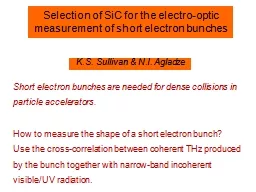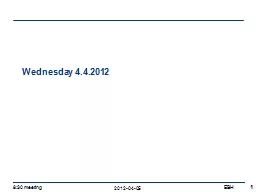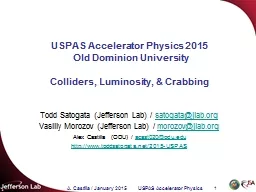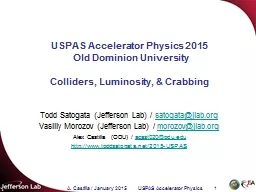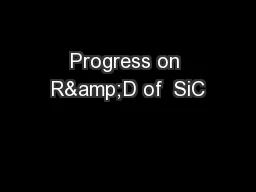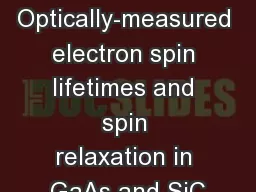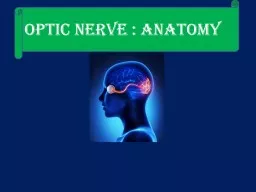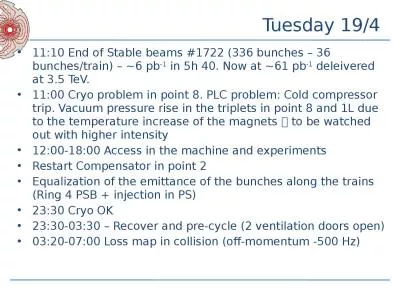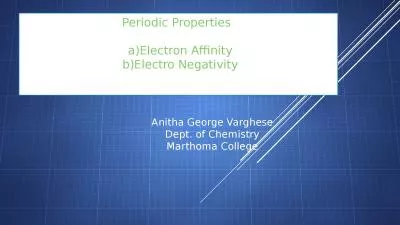PPT-Selection of SiC for the electro-optic measurement of short electron bunches
Author : min-jolicoeur | Published Date : 2018-11-13
KS Sullivan amp NI Agladze Short electron bunches are needed for dense collisions in particle accelerators How to measure the shape of a short electron bunch Use
Presentation Embed Code
Download Presentation
Download Presentation The PPT/PDF document "Selection of SiC for the electro-optic m..." is the property of its rightful owner. Permission is granted to download and print the materials on this website for personal, non-commercial use only, and to display it on your personal computer provided you do not modify the materials and that you retain all copyright notices contained in the materials. By downloading content from our website, you accept the terms of this agreement.
Selection of SiC for the electro-optic measurement of short electron bunches: Transcript
Download Rules Of Document
"Selection of SiC for the electro-optic measurement of short electron bunches"The content belongs to its owner. You may download and print it for personal use, without modification, and keep all copyright notices. By downloading, you agree to these terms.
Related Documents

